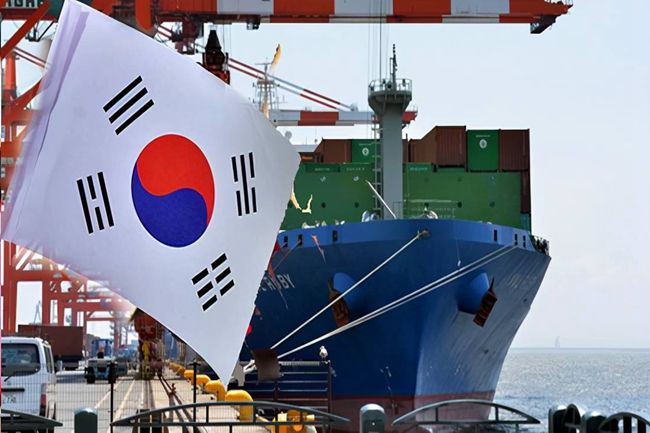The US Department of Commerce recently issued a notice announcing the inclusion of 36 Chinese high-tech companies and research and development institutions, including Changjiang Storage, on the US Export Control "Entity List". The announcement states that "US companies are prohibited from supplying US goods, technology and services to companies on the list without permission". Notably, among the 36 Chinese entities on this latest list, 21 companies in the artificial intelligence chip industry are also listed under the Foreign Direct Product Rule, which prohibits them from importing products containing US technology from non-US companies.
South Korea's Seoul Economic reported on December 16 that the South Korean semiconductor industry is concerned that the accelerating pace of U.S. curbs on China could lead to damage to South Korean companies as the U.S. government imposes further sanctions on Chinese semiconductor and artificial intelligence companies. Moreover, a report in the Korea Economic News on December 17 said that South Korean Minister of Industry, Trade and Resources Lee Chang-yang recently said at the Korea Economic Millennium Forum in Seoul that there was no need for Seoul to reject the US-led chip quartet (US, Japan, China Taiwan, South Korea) alliance. This is the first time the South Korean government expressed its willingness to join the chip quartet alliance. Some Korean experts believe that the negative impact of the U.S.-centered chip quartet alliance on the Korean semiconductor industry will be greater than the positive impact.

There are also data show that this year, the United States through the "Inflation Reduction Act", "Chip and Science Act" and other practices to support its strategic industries, suppressing the Chinese semiconductor industry, has significantly impacted South Korea's proud pillar industry. According to data from the Korea Customs Service, Korea's semiconductor exports fell 27.6% year-on-year in the first 10 days of December. In November, Korea's information and communication technology (ICT) exports plummeted by nearly 23% year-on-year, the fifth consecutive month of negative growth. The semiconductor industry was the most affected by the decline in ICT exports, with Samsung Electronics' dynamic random access memory (DRAM) sales falling 34.2 per cent in the third quarter of this year from a year earlier. SK Hynix, the second-ranked South Korean semiconductor company, posted sales of US$5.246 billion, down 25.3 per cent from a year earlier.
Statistics released by the Korea Trade Association show that Korea's semiconductor exports to China in the first nine months of this year amounted to US$42.025 billion, accounting for 40.6 percent of overall exports to China, up 1.3 percentage points year-on-year, and the degree of dependence on semiconductor exports to China has deepened compared to the previous period. The proportion of semiconductor exports in Korea's trade with China reached 44.2 per cent in 2015, declined to 38.9 per cent the following year, and has since hovered around 40 per cent.
South Korean industry insiders judge that the high dependence of semiconductor exports to China is the main reason for the decline in overall semiconductor exports this year. Since this year, South Korea's monthly semiconductor export growth has continued to decline, turning negative from August, and the cumulative semiconductor exports in the first nine months fell sharply by 19.1% year-on-year, including a 16.3% decrease in semiconductor exports to China. According to statistics, Korea's semiconductor exports reached US$128.7 billion in 2021, accounting for about 39.7% of total exports, of which exports to China accounted for 59.7%.
The sharp decline in exports of semiconductor products has caused a significant increase in corporate inventories. According to LeadersIndex, a Korean corporate analysis institute, the inventory of 195 large semiconductor companies in Korea increased by 36% from 121.4922 trillion won (about 647.7 billion yuan) at the end of last year to 165.4432 trillion won at the end of the third quarter of this year.
Not only the semiconductor industry, but also many other industries in Korea are not optimistic about the growth rate of their exports next year. According to the "2023 Export Outlook Survey", the companies surveyed generally forecast that exports will only grow by an average of 0.5% year-on-year next year. By sector, exports of electrical and electronic products fell by 1.9 per cent, petrochemicals by 0.5 per cent, steel by 0.2 per cent, automobiles by 1.9 per cent, general machinery and ships by 1.7 per cent and bio-healthcare by 3.5 per cent. Even 39.3% of companies thought that exports were likely to fall year-on-year next year. As for the reasons for this, 45.7 per cent of companies cited higher raw material prices as the reason for the decline in export competitiveness, while 33.9 per cent cited the weakness of the economies of their main export targets.

The Korean economy is now facing serious challenges as smartphones, chips and automobiles are affected by the current and expected decline in exports next year. The latest figures show that South Korea's export shipments fell by 14% year-on-year in November, the second consecutive month-on-month decline and the first time since 2020 that exports have fallen for two consecutive months. According to the latest data released by the Korea Customs Service, South Korea's exports fell 20.8% year-on-year from December 1 to 10, while imports fell 7.3% year-on-year, leaving a trade deficit of US$4.923 billion. South Korea's cumulative trade deficit this year has reached US$47.464 billion, the highest ever.
Under the influence of weaker export realities and expectations, the Bank of Korea has recently lowered its economic growth forecast for 2023 to 1.7% from the previous 2.1%. The South Korean government has warned that the economy could slow far more than expected in the first half of next year. on 14 December, the ADB lowered its growth forecast for South Korea next year to 1.5%, down 0.8 percentage points from 2.3% in September this year, according to the Asian Economic Outlook 2022 supplement published by the Asian Development Bank.
Korea, which has always been regarded as the canary in the global economy, is clearly sending out the first signals of a world recession in the coming year.

